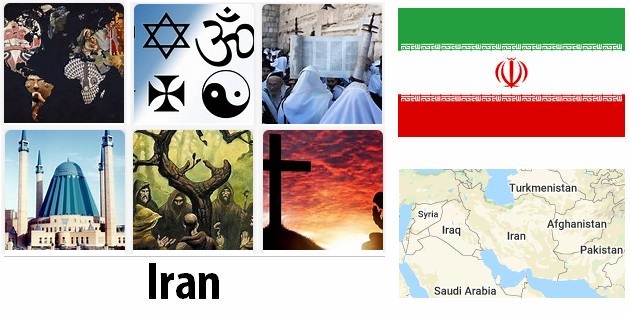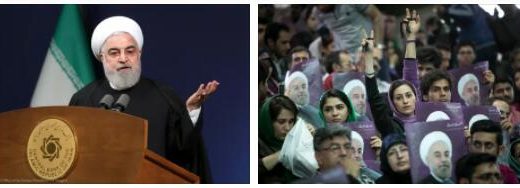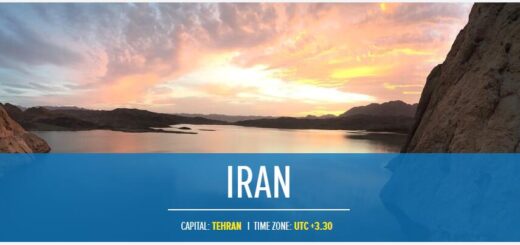Iran Religion
The overwhelming majority of Iranians are Muslims. The vast majority – especially within the largest ethnic groups of Persians and Azeri – belong to the Shi’a Muslim orientation in Islam. Iran has the world’s largest Shiite population. Other religious groups are discriminated against.
Shia has been a state religion in Iran since the 16th century. The focus arose already in the 600s in connection with a dispute between Muslims over who was the rightful successor to the Prophet Muhammad. The majority considered their leaders to be appointed by the elders in accordance with tradition (Sunni). But a minority believed that Muhammad’s successors should come from his own family and chose his son-in-law and cousin, Ali. They called themselves Shiat Ali – Ali’s followers. Shia Muslims early called their religious leader imam, instead of caliph, as the Sunni Muslims said. The Imam is considered able to interpret Muhammad’s hidden message and has a special legal position. The Iranians are twelve Shiites (Imamites) and thus belong to the largest branch of Shia Islam. It recognizes twelve imams from Ali.
The twelfth imam disappeared in the 8th century but will once again return to his faithful as al-mahdi, the savior. He will then destroy evil and command justice according to the divine law. Waiting for him to return, every faithful Shia Muslim should choose a living religious leader to follow as his example. It contributes to Shiite Islam being said to be quite decentralized: there are several authorities, each with an organization built up around it. The scribes are educated in religious schools in the holy cities. However, the Iranian scribes have long since formed a hierarchy. The most learned are given the title mojtahed and the most prominent among them is called ayatolla. The main ones are the twelve storayas.
The scribes have a slightly different task than priests in Christianity and Judaism, though they should all convey the religious message. In Islam, they do not have the role of functionaries in sacred acts. The Muslim is responsible, directly before God, for the most sacred acts, such as prayer and pilgrimage.
After the 1979 Islamic revolution, religion has dominated society. Law enforcement according to the law of religion, sharia, was introduced in 1983. This means, among other things, that thieves risk being punished by cutting off a hand and adulterers to endure whipping. A Muslim who converts to another religion also risks the death penalty. Such punishments, however, have been enforced relatively rarely. Prygel is the punishment for more than 50 different crimes, for example fraud and alcohol consumption (see also Political system). Sharia is not a completely unified concept, although some rules can be read in the Quran.
- Countryaah: Population statistics for 2020 and next 30 years in Iran, covering demographics, population graphs, and official data for growth rates, population density, and death rates.
Around 10 people, including the majority of Baluchs, Turkmen and Kurds, confess to Islam’s main focus, Sunni. Sunni Muslims complain about discrimination and believe that their religious customs are not respected. Only exceptionally, they get permission to build their mosques. Supporters of Islamic mysticism, Sufism, have been subjected to violence and harassment during the 2000s, and several Sufic leaders have been sentenced to prison and have their civil rights curtailed. Sufi comes from the Arabic word for wool, suf: members of the Sufi orders can be seen wearing a pointed woolen hat.
There are still a small number of followers of the former state religion of Zoroastrianism, founded by the Prophet Zarathustra in the 5th century BC. The 1979 Constitution recognizes Zoroastrians, Jews and Christians as religious minorities, but in practice non-Muslims are disadvantaged. Iran has the largest Jewish population in the Middle East outside Israel. In the 1970s, there were over 100,000 Jews in the country. Many left after the revolution and today about 20,000 Jews live in Iran.
Regular persecution affects the followers of Baha’i, a society that left Islam in the 19th century and developed its own religion, which they must not practice openly. According to their own data, they have at least 300,000 members in Iran. After the Islamic Revolution, more than 200 Baha’is were executed, and mass arrests occurred during the 1980s. Harassment increased after 2005, when security forces and the civilian guard, without risk of punishment, threatened, beat and imprisoned many Baha’is. They are also prevented from participating in higher education.
2015
December
UN experts criticize robot tests
A UN expert group notes that a robotic test conducted by Iran in October violated a resolution adopted by the UN Security Council. According to the expert group, the medium-range robot of the Emad model had sufficient scope and strength enough to be equipped with nuclear weapons.
Russian air defense robots in place
Russia begins supplying S-300 model air defense robots to Iran. The agreement was frozen by Russia in 2010, citing UN sanctions, but following the international agreement on Iran’s nuclear research program in early 2015, President Putin ordered the supplies to be resumed.
IAEA: Iran abandoned nuclear weapons plans several years ago
In a report, the IAEA reports that an investigation showed that Iran was engaged in nuclear weapons development until the end of 2003 and on a smaller scale thereafter. However, according to the International Atomic Energy Agency, there is no evidence that such work occurred after 2009. The work should also not have been conducted other than for purely research purposes, and there is no evidence that enriched uranium or plutonium was used in this context.
October
Iran discusses Syria with its enemies
For the first time, Iran is participating in high-level international talks on Syria along with traditional enemies such as the United States and Saudi Arabia.
Khamenei warns of US intentions
Iran’s supreme leader Ayatollah Khamenei voices support for the agreement with the major powers over the nuclear program but urges the country to be vigilant and says the US is not to be trusted.
Parliament approves the nuclear agreement
Parliament approves the Nuclear Energy Settlement (see July and August), with voting numbers 161–59. Thirteen members abstain from voting. The day after, the Guardian Council also approves the agreement.
September
Optimistic IAEA chief
IAEA chief Yukiya Amano says that “significant progress” has been made in the investigation of Iran’s possible earlier attempts to build nuclear weapons.
August
Kurdish separatist is executed
A Kurdish activist is executed after being sentenced for membership in the organization Pjak (see also Political groups) and for killing a prosecutor. Amnesty International condemns the execution as a violation of both Iranian law and international law, as the Supreme Court still examined an appeal against the death sentence. Earlier in August another member of Pjak was executed.
Parliament examines the agreement
Parliament appoints a 15-man commission to review the nuclear energy deal with the major powers.
Detailed report to the IAEA
Iran submits a written statement to the IAEA for all its previous nuclear energy work, which has been one of the conditions for the deal with the major powers.
July
Amnesty report on more executions
Amnesty International claims that the number of executions in Iran has increased rapidly. Until July 15, 694 executions were carried out during the year according to Amnesty’s assessment. That is almost three times as much as the Iranian authorities publicly admit.
The Security Council approves the agreement
The UN Security Council unanimously approves the international sanctions against Iran to be phased out as soon as the IAEA confirms that Iran has begun to live up to its commitments under the agreement. As this process begins, seven previous UN resolutions on Iran are repealed. The new resolution provides that all sanctions can be reinstated if Iran violates the rules within the next ten years.
The threat of sanction remains
In a letter to the UN Security Council, the six countries that negotiated with Iran write that the threat of renewed sanctions will hang over Iran for 15 years, ie for five years after the expiry of the agreement.
Sharp criticism from Israel
The Israeli government responds as expected strongly to the agreement with Iran. Prime Minister Netanyahu describes it as a “historic mistake” and Deputy Foreign Minister Tzipi Hotovely says that Israel is, by all means, trying to prevent the agreement from being ratified.
Uncertainty about military facilities
One question that still remains in the air is whether Iran’s military facilities should be inspected. Iran gets the right to say no to any UN request, after which a sort of arbitration tribunal appointed by Iran and the six major powers will make decisions.
Frozen money can soon be released
As soon as it has been confirmed that Iran is living up to its commitments, the country will have access to up to USD 100 billion that has been frozen in foreign accounts. The country is also given immediate access to the international financial market, which is expected to bring great relief to the civilian population when trade is released and foreign goods can flow into the country. Oil prices fell immediately by about a dollar on the world market upon the announcement that Iran could soon export oil again freely.
The Iranian nuclear program agreement is clear
On July 14, it is announced that an agreement on the Iranian nuclear research program is finalized after more than ten years of on-and-off negotiations, culminating in a nearly three-week intensive final spurt. Under the agreement, most international sanctions against Iran are set to be lifted, as Iran’s nuclear research program is delayed for ten years. Iran agrees that the sanctions can be reinstated within 65 days if the country breaks the agreement. The UN arms embargo will remain for five more years and the ban on selling robotic technology to Iran will be extended by eight years. If Iran tries to break the agreement, it is estimated that at least a decade ahead it will take the country a year to construct an atomic bomb, which is considered to give the superpowers sufficient time to intervene.
June
New demands on Parliament’s core agreement
Parliament adopts a law designed to protect the Iranian nuclear program; The law is feared to complicate international negotiations on the nuclear program, which is in a delicate final stage, as it prohibits, among other things, foreign inspections of military facilities in Iran. It also calls for all sanctions against Iran to be lifted as soon as an agreement is signed. According to Iran’s international counterparts in the negotiations, the sanctions cannot be abolished until careful inspections have confirmed that Iran has complied with all the requirements of the agreement. Immediately after Parliament’s vote, Supreme Leader Ayatollah Khamenei said some sanctions could be phased out “within a reasonable time” but that those pertaining to the country’s economy and banking system must be abolished immediately after signing.
April
Russia sells air defense
Russia decides to supply an air defense system of model S-300 to Iran. The deal was halted in 2010 after pressure from, above all, the US and Israel, but now President Putin is lifting the embargo after Iran signed a framework agreement on its nuclear program.
Iran hopes to break the isolation
For Iran, the agreement on final praise in port in June is a way to break the country’s isolation and build up the economy damaged by the sanctions. The United States may also be presumed to use a cautious approach to Iran to help resolve the conflicts in Iraq and Syria. Not since the Iranian revolution in 1979 has the United States and Iran worked as closely as during the nuclear program negotiations.
Optimism following framework agreement on the nuclear program
Negotiations on Iran’s nuclear program conclude with agreement on a framework agreement that the major powers support. Overall, the agreement meets with muted optimism around the world. The only critic who criticized Israel is Prime Minister Benjamin Netanyahu, who describes the deal as a deadly threat to his country and demands that Iran be forced to recognize Israel’s existence in a final agreement.
March
UN alarm about more MRI crimes
UN Reporter for Iran, Maldivian diplomat Ahmed Shahid, says that respect for human rights in Iran has deteriorated significantly despite the election of relatively reform-minded President Rohani in 2013. He believes one reason may be that the most conservative forces want to hurt the president’s reputation as reform-friendly and that ongoing negotiations on Iran’s nuclear program push human rights violations from the news reporting. In particular, Shahid points to a sharp increase in the number of executions – at least 753 in 2014 alone and 252 until mid-March this year – and more arrests of journalists and human rights activists. Among those executed in 2014, 13 were minors. Most who are executed are convicted of drug offenses,
Sunni Kurds are executed
Six Sunni Muslim Kurdish men are executed in a prison outside Tehran. They are said to have been convicted of “hostility to God”. Four of them are said to have been accused of murdering a Sunni leader, but they claimed they were arrested several months before the murder was committed. Another 27 Sunnis are in death cells in Iran. Everyone claims that they were sentenced for their religious beliefs.
January
Former Vice President is imprisoned
Mohammad Reza Rahimi, former First Deputy President of Mahmoud Ahmadinejad, is sentenced by the Supreme Court to prison for five years and three months. He will also be fined the equivalent of almost SEK 3 million. The Court does not say what crime he was convicted of, but Parliament has previously accused him of extensive embezzlement.
Cooperation agreement with Russia
Iran signs a military cooperation agreement with Russia, mainly based on a common view on “US involvement in regional and international affairs”.
The reform movement must meet
For the first time in more than five and a half years, the Iranian reform movement is holding a national public meeting. A few hundred delegates representing about 20 parties are gathered to stand out for the upcoming business. Presidents Rafsanjani and Khatami do not participate themselves, but urge the reform movement to stay together for the March 2016 parliamentary elections.


